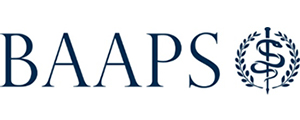VOLVER
Academy
Academy
Programa
Adapte el horario de la clase / congreso transmitido en vivo a su zona horaria
Referencia de zona horaria: (UTC-04:00) America, New York
Breast surgery - In collaboration with BAAPS
Sala: Webinar
Fecha: martes 8 junio 2021 de 11:00 a 12:30
Formato: SESIÓN ENFOCADA > presentación que cubre una temática principal del congreso
Fecha: martes 8 junio 2021 de 11:00 a 12:30
Formato: SESIÓN ENFOCADA > presentación que cubre una temática principal del congreso
Las presentaciones
| Horas | Oradores | Título de la presentación | Resumen | Número |
| 11:00 | Presenter | 110500 | ||
| 11:00 | Introduction | 110501 | ||
| 11:05 | Fat injection in breast: safety review | 110502 | ||
| 11:25 | Approaches to breast implant removal, a concept in evolution | 110503 | ||
| 11:45 | The lower pole mastopexy augmentation (LPMA): augmenting the bottomed out breast | Ver | 110504 | |
| 12:05 | Discussion and Q&A with the audience | 110506 | ||








